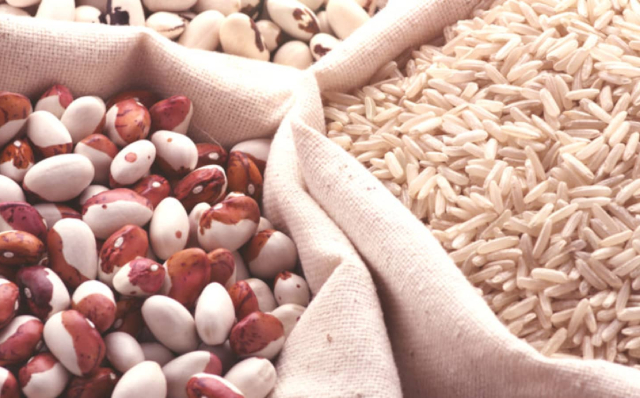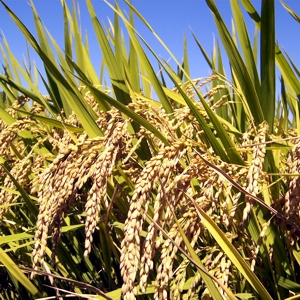Rice has been the most important staple in Asia for as long as anyone can remember. Some folks there eat it three (or even four) times a day. Maybe that’s because rice goes with everything, sweet and savoury…
 Rice and beans: The almost mystical combination that’s provided a
Rice and beans: The almost mystical combination that’s provided a
complete, balanced dietary protein for a thousand generations
of folks who couldn’t afford to, or preferred not to eat meat…
… And, in combination with legumes, constitutes a complete dietary protein. That, in turn, is probably why Rice and Beans (in some form) is a central player in so many cuisines from all points of the compass.
It’s true that some ‘new’ (rediscovered ancient) grains like quinoa provide a complete protein all by themselves. But Rice has been ubiquitous for so long that most fans are refusing to try substitutes, as the great shift away from unsustainable foods such as real meat gains momentum.
It’s indicative of the stranglehold that Rice – even the mere idea of Rice – has on Eastern minds. Some anthropologists say it’s a matter of ancestral memory.
“Maggie, you’re so full of…” I hear you say
I know it’s hard to accept that people could inherit memories the way they do red hair or blue eyes. But I always think of how every cat I (or my family’s many veterinarians over the years) have known was instinctively terrified of anything that might resemble a snake, even in the smallest detail. And that, insists animal behaviourist Con Slobodchikoff, is because, “Cats are genetically hard-wired through instinct to avoid snakes. […] Cucumbers look enough like a snake to have the cat’s instinctive fear of snakes kick in.”
It’s not just cats. Many humans are instinctively afraid of snakes. Me included. How else can you explain that, if it’s not ancestral memories?
And what about the claims that humans are hard-wired to crave salty, sugary, fatty foods? I believe it’s just as likely that billions of us are hard-wired to crave rice.
If so, it should come as no surprise that, in some cultures including Chinese, the word for ‘rice’ is the same as the word for ‘food’…
Anyway…
It seems like a good time to follow up our couscous post last earlier this week with a refresher on rice!
Folks have been trying to perfect the preparation of rice for millennia. And it was thought the Japanese finally had in the mid-1950s, when the automatic rice cooker first appeared.
“A basic rice cooker has a main body (pot), an inner cooking container which holds the rice, an electric heating element, and a thermostat,” the master entry on the device in Wikipedia explains.
“The bowl is filled with rice and water, and heated at full power. The water reaches and stays at the boiling point (100 °C, 212 °F). When the water has all been absorbed, the temperature can rise above boiling point, which trips the thermostat. Some cookers switch to low-power ‘warming’ mode, keeping the rice at a safe temperature of approximately 65 °C (150 °F). Simpler models just switch off, and the rice enters the resting phase.”
A number of rice cooker makers have adorned their high-end models with all sorts of digital gadgets over the past couple of decades. Foolproof? As the old joke about programming VCRs said, “It’s so simple, only a child can do it…”
Just do what the locals do…
But I’ve never owned a rice cooker and I probably never will. If you want a semi-automatic rice cooker, there are several reliable methods by which you can use a slow cooker for that. Ditto a Crock Pot or an Instant Pot.
The vast majority of the billions around the world who eat rice daily prepare it manually. That is, they bring 2 parts water to the boil, add one part dry rice, stir, cover and let simmer until all the water is absorbed, then cover again and turn the heat off. Allow the rice to sit covered for 20-30 minutes until it has fully ‘bloomed’.
There. Nothing to it. All you have to do is perfect your timing so your rice doesn’t burn.
Be not afraid!
Go forth and cook rice… And spend as much time Googling as it takes to discover a few select rice recipes that you can count on anytime you need a simple though elegant side or main.
~ Maggie J.

